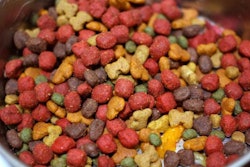
Big players in the human food market are reformulating to meet consumer demands for a clean label. Companies like Campbell Soup, Kellogg and Nestlé are removing artificial colors and flavors, as well as simplifying ingredient lists in such popular products as breakfast cereal and ice cream. Transparency is a critical component in the business of feeding humans and animals, and the clean label movement is one tool the industry is embracing to satisfy the customer’s need for information.
So what exactly is a clean label? Just as the term “natural” remains undefined in the human food industry, “clean label” is also open to interpretation. A study from the NPD Group surveyed 5,000 consumers and found that 80% of “clean eaters” considered this a lifestyle, not a trend. The most important features of a clean diet for those surveyed were foods that do not contain chemicals, preservatives, additives or pesticides. Without a clear definition or any regulatory guidelines, the door for class-action litigation is open, so proceeding with caution is advisable.
So if we use the criteria of no chemicals, preservatives, additives or pesticides, how does the pet food industry ever achieve a clean label? It is certainly possible to eliminate chemicals in pet food, but preservatives are a necessary component of most types of pet food formulations. While there are options that meet the regulatory definition of natural, they may not meet the consumer definition of natural. Additives can be anything from processing aids to essential vitamins and minerals. And the elimination of all pesticides at any point in the growing of a grain, legume, fruit or vegetable wanders over into the organic category, which is costly and limited in supply.
Another component of clean labeling in human food is simple recipes. Taking a recipe for 20 or more ingredients down to just seven or eight allows the consumer to quickly assess exactly what is contained in the processed food they are purchasing. We are seeing this trickle over into pet food, with many brands talking about limited ingredients or simple recipes. Of course, with complete and balanced formulas, there are numerous vitamin and mineral ingredients that are added to the formula. So just like the exception allowed with natural claims for the vitamins and minerals in the recipe, exceptions are being claimed for these ingredients in limited ingredient diets.
Unlike natural claims for pet food, there is no regulatory standard for limited ingredient or simple recipe statements. Voluntary claims are subject to the regulatory official’s opinion on whether or not the language is misleading to the consumer. While this offers the opportunity to defend the marketing position, it can also result in a state taking a firm stand and requiring the language to be modified or even removed. With the increase in the use of limited ingredient diet descriptions, there are plans to discuss the creation of a guideline or definition for the Association of American Feed Control Officials’ Official Publication. This will be interesting an interesting topic to watch as it evolves over time.


















